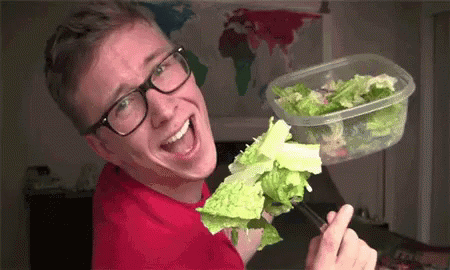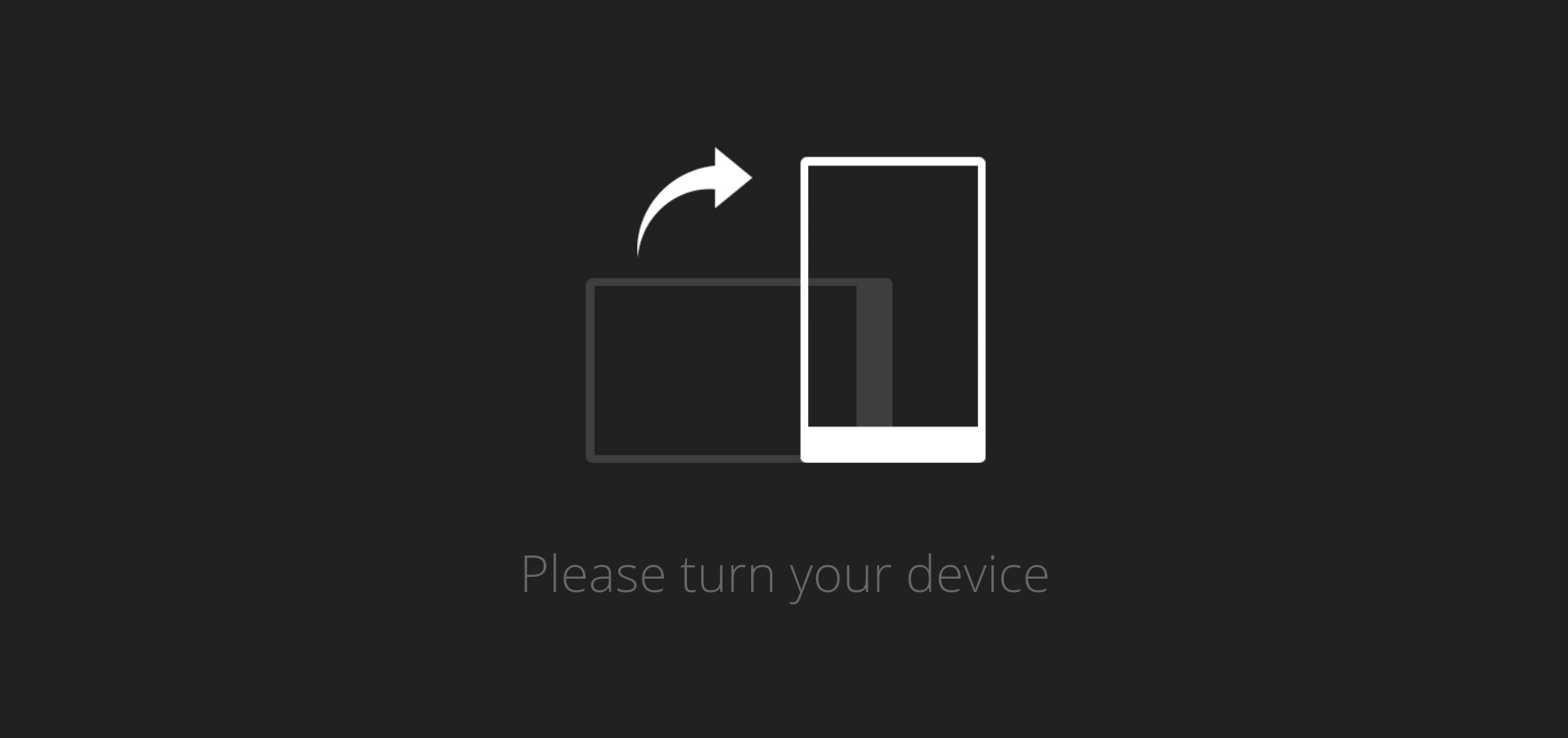
I Went Vegan For A Month & It Actually Didn’t Suck
Earlier this year a “planetary health diet” was created by more than 30 scientists from across the globe who reached a scientific consensus on what defines a healthy and sustainable diet.
The EAT-Lancet Commission on food, planet and health addresses the issues faced by a growing population, as well as the fact food production is causing environmental problems. 37 international experts on nutrition, health and sustainability got together to address these challenges, coming up with the planetary healthy guide that globally would require a reduction in red meat and sugar (to be cut by 50%), while intake of vegetables, fruit and nuts must double.

Graphic via Commondreams.org.
OK, cool you’re boring me though.
SORRY! In basic terms, it’s about cutting meat, processed foods and sugar for a higher consumption of plant-based foods, while also focusing on reducing food waste. The diet is seen as a way to save millions of people a year from deaths caused by unhealthy diets while preventing the destruction of the world we live in. By 2050, it’s estimated the world’s population will stand at 10 billion and a continuation of the diets people lead today would mean more severe health problems and global warming.
With that information on hand, I decided to trial a vegan diet for a month and here’s what I learned along the way.
Meal prep is key:
To make your life a whole lot easier, it’s worth researching a bunch of recipes before you get start and stock up on some new staple ingredients you may not have thought of before. I’m talking almond meal, almond/coconut milk, fresh fruit and veg, cocoa powder, rice malt syrup, Nuttelex, nutritional yeast flakes, chickpeas and lentils, coconut cream/milk, tamari, bulk herbs and spices… the list goes on!

It’s easy to go into carb overload:

When you’re cutting out meat and many snacks that have milk-based ingredients (and boy, there’s a lot!) it can be easy to stick to snacking on carbs on the reg. As soon as you find out things like various flavours of chips, Pringles, Jatz, pretzels, crumpets, english muffins, various brands of breads and wraps, Oreos and some Arnott’s biscuits are all vegan, it’s too simple to just to decide to stock up on that kind of food just to HAVE in your house.
And oh man, have you ever had Linda McCartney’s pies or sausage rolls? Once you pop you can’t stop.
It’s easy to combat this by cutting up fruit and veg as snacks and making sure you keep it on hand at work or at home so you don’t fall into the trap of thinking eating avo on toast three times a day is acceptable.
Learning to make vegan meals and snacks is super fun and plot twist, they taste great:

Sites like the Minimalist Baker are amazing and have recipes that look and taste delicious. Simply following a vegan recipes hashtag on Instagram is a huge help too and will have your feed giving you all sorts of food inspiration. And when the sugar/chocolate cravings hit, buy a Vego bar… they are so freakin’ good.
You also don’t have to cut out your favourite foods — so many of them are so simple to make without meat, including bolognese, burgers, stir-fries, etc. And, look, if you’re like me and the thought of tofu doesn’t do it for you, I found cutting it super small and adding it to stir-fries could get me by while getting used to it.
Hate tofu? Chickpeas and lentils really are THAT bitch:

One of the easiest and most delicious chickpea recipes I made after work in as little as 15-20 minutes (Via Cheesy Vegetarian).
Hello, I am here to talk about our lord and saviour, the humble chickpea. Whether it’s roasting them for a snack, adding them to your salad or curries, or using them as a batter for cookies (yes, really!) chickpeas are 100% that bitch.
Lentils are also an incredibly cheap and healthy way to add protein into your diet and can be super versatile whether you’re using them in soups, salads, or substituting them for meat and making things like lentil bolognese or meatballs.
Always check the food labels:
Just because something states it’s vegetarian-friendly doesn’t necessarily make it VEGAN-friendly. While you may have thought, for example, that packet chips are safe it turns out sometimes the flavouring is not considered vegan.
However there are many great sites like Vegan Australia which have vegan grocery guides and websites like Veggieful list a whole bunch of snacks/foods/etc. that are 100% vegan and stocked at your local Coles or Woolies.
You will probably bloat the fuck out:
FIBRE OVERLOAD!

I think I spent the first two weeks walking around feeling about three months pregnant. The thing about switching to a vegan diet is you start unnecessarily worrying about things you may have not thought about as much before, such as whether you’re getting enough protein, or getting the right intake of nutrients you need on a daily basis. You can save yourself the bloat by introducing fibre a little more gradually to your diet. As dieticians Kate Save and Laura Ballantyne from Be Fit Food told us:
“Try to identify the single source of fibre that is causing your bloating and reduce the quantity you are eating. You can then slowly increase the quantity over weeks or months, allowing your digestive system to adapt. A dietary fibre intake of 25-30g is recommended, and should be introduced into the diet gradually to avoid adverse outcomes.”

And don’t forget to increase your water intake! It’ll help with the whole fibre overload sitch.
Meat-free “meat” has made huge progress in the last few years:
Go to your local supermarket, see if they stock the Beyond Burger and tell me I’m lying. (Coles definitely does FYI.)
Not only that but many pubs, restaurants and takeaway places have upped their vegan game in the last couple of years, with Grill’d, Hungry Jacks, Schnitz and many others hosting vegan options on their menu.
Seriously, I think I cried tears of pure joy eating the vegan wrap from Schnitz.
After establishing a routine for a month, it’s pretty easy to continue to live a (mostly) meat-free life:
After my four week stint, I didn’t actually touch meat again for a while but I was very quick to add eggs back into my diet (I love them, I’m sorry). But after going strictly vegan for a month, it’s been super easy to stick with following the actual guidelines of the Planetary Health Guide and cutting down egg/meat consumption to a couple of times a week and eating plant-based for the majority of the time.

In the following months I’ve pretty much stuck to a diet of salmon/white fish once a week, eggs 2-3 times a week, and no longer buy meat to cook with (but will eat it out on occasion). So while one day I may aim to follow a stricter vegetarian diet again, it’s actually very easy to reduce your consumption of meat and establish a pattern that’s less reliant on adding meat to your daily food intake.
Worried about protein? You don’t need to be.
One of the biggest misconceptions about going plant-based is that all of a sudden people think you’ll be cutting your protein intake drastically. Not the case! The Be Fit Food dieticians explained it’s still possible to keep a healthy intake of protein, even if you work out regularly and you’re trying to build muscle.
“A vegan diet can meet protein requirements as long as a variety of plant-based protein foods are consumed. This should include soy products, legumes, wholegrains, nuts and seeds. Include a protein source at each meal (such as vegan protein powder, edamame, tofu, tempeh) and if you participate in high-intensity exercise or weight training, consume 20-25g of plant-based protein within 30 minutes of completing the exercise to optimise muscle recovery and maintain muscle mass.”
View this post on Instagram
There are a lot of great brands that sell vegan protein powder, from Tropeaka (which includes flavours such as salted caramel which you can make a hot chocolate out of! Who said protein shakes have to be boring?!) to Amazonia who also host a great range of protein powders.
If you’re still not convinced, Aussie guy Simon Hill runs a popular Instagram account and podcast called Plant Proof which is filled with information on going plant-based, from the health benefits of a vegan diet to debunking commons myths.
Pros of going vegan for a month:

– Discovering all sorts of new foods and recipes.
– Realising you don’t actually need meat as a staple in every meal.
– Once you have staple ingredients, it’s actually pretty cheap to be eating vegan or vego.
– The feeling of knowing you’re doing your own little bit for the environment and animals out there.
– Clearer skin. Seriously! My skin has never been as good as it was when I was doing a strict vegan diet — whether it’s due to the lack of meat or lack of processed sugar is yet to be confirmed, but something worth keeping in mind (though it’d vary from person to person).
Cons of going vegan for a month:

– The vegan bloat! (It’ll get better, I promise.)
– Eating out is easier than it’s ever been (especially if you live in a city with specified vegan/vego restaurants) but more places could do with varying their vego and vegan options, because look, we can all get sick of mushrooms.
– It’s sometimes hard to remember to consciously make the right choices. Yes, I am talking about the times you end up at Macca’s at 2am and realise chicken nuggets are off the table for you.
– People will probably question you and start telling you why meat is so important in your diet as though protein can’t be consumed elsewhere.
– If you’re like me and love eggs, going out for brunch isn’t nearly as fun.
Final consensus: There’s absolutely nothing bad that can come from cutting out meat and replacing it with more plant-based foods. Give it a go!

